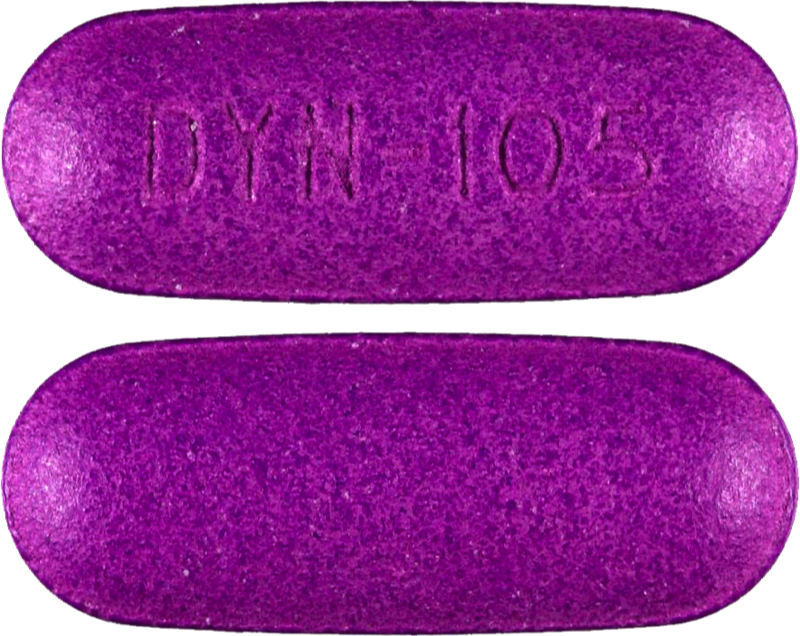
Minocycline
Minocycline is one of the stronger antibiotics used to treat acne. It belongs to the tetracycline family, just as doxycycline does. Minocycline treats only the red, pus-filled pimples of acne; it won't improve acne cysts (nodules) deep under the skin. Minocycline won’t treat clogged pores: blackheads or whiteheads.
Comparison to doxycycline
Minocycline comes in various strengths, or doses. Compared to doxycycline, minocycline has similar effects on acne but a different and more significant side effect profile. Minocycline penetrates better into the oil glands, and therefore some dermatologists believe minocycline might be a bit more effective then doxycycline, but this has never been shown in any study. I typically recommend doxycycline over minocycline due to rare but potentially devastating adverse reactions which might occur with minocycline. I do consider minocycline more effective for patients with acne who also have other acne-related conditions such as hidradenitis suppurativa or dissecting cellulitis of the scalp.
Common Side Effects
Minocycline has a significant side effect profile. Less than 10% of patients experience dizziness or vertigo, a sensation that the room is spinning. Of those patients that do experience this, some will become nauseous and may even vomit. This side effects can happen because of minocycline’s effect on the balance system. As with any antibiotic, women may develop a yeast infection. Additionally, diarrhea or loose stools can occur and can be mitigated by eating yogurt daily or by taking a probiotic supplement. Additionally, a type of blue or gray colored pigmentation of the skin can occur, particularly at the forearms and shins, as well as at areas of scarring. This blue colored pigmentation can even involve the tongue, gums and teeth, the whites of the eyes, and the nails. This discoloration is typically seen after over one year of use, though rarely it can be seen with shorter durations of use. All of these side effects are dose-dependent, meaning that if you are taking a lower dose, your chances of developing them are reduced.
Comparison to doxycycline
Minocycline comes in various strengths, or doses. Compared to doxycycline, minocycline has similar effects on acne but a different and more significant side effect profile. Minocycline penetrates better into the oil glands, and therefore some dermatologists believe minocycline might be a bit more effective then doxycycline, but this has never been shown in any study. I typically recommend doxycycline over minocycline due to rare but potentially devastating adverse reactions which might occur with minocycline. I do consider minocycline more effective for patients with acne who also have other acne-related conditions such as hidradenitis suppurativa or dissecting cellulitis of the scalp.
Common Side Effects
Minocycline has a significant side effect profile. Less than 10% of patients experience dizziness or vertigo, a sensation that the room is spinning. Of those patients that do experience this, some will become nauseous and may even vomit. This side effects can happen because of minocycline’s effect on the balance system. As with any antibiotic, women may develop a yeast infection. Additionally, diarrhea or loose stools can occur and can be mitigated by eating yogurt daily or by taking a probiotic supplement. Additionally, a type of blue or gray colored pigmentation of the skin can occur, particularly at the forearms and shins, as well as at areas of scarring. This blue colored pigmentation can even involve the tongue, gums and teeth, the whites of the eyes, and the nails. This discoloration is typically seen after over one year of use, though rarely it can be seen with shorter durations of use. All of these side effects are dose-dependent, meaning that if you are taking a lower dose, your chances of developing them are reduced.
Rare but Potentially Serious Side Effects
Unfortunately, there are rare and serious side effects that can occur with minocycline. Minocycline can cause a type of allergic reaction called drug hypersensitivity syndrome, also known as drug rash with eosinophilia and systemic symptoms (DRESS syndrome). Patients typically have a rash, fever, facial swelling, and they tend to feel very ill and therefore seek medical attention. This is a severe reaction that can result in damage to internal organs, such as the liver. Rarely, death can occur. The damage is potentially irreversible. Another serious and potentially permanent adverse reaction to minocycline is drug-induced lupus. Lupus is an autoimmune disease, in which the body's own immune system attacks various organs in the body. Additionally, minocycline can cause an increase in the pressure inside the head, also known as pseudotumor cerebri. The patient would have a very bad headache and would require emergency treatment. It would be more likely to occur in heavyset individuals, particularly women. The risk is increased in patients taking birth control pills as well.
Risk of Inflammatory Bowel Disease
There is evidence that long-term usage of anti-microbial dose (full dose) tetracycline-type antibiotics or multiple short courses of these antibiotics increase the risk of developing inflammatory bowel diseases such as ulcerative colitis and Crohn’s disease, as demonstrated in this 2012 article published in the medical journal Pediatrics.
Other Considerations
Minocycline is not safe for pregnant, conceiving, or breastfeeding women. Minocycline can be taken with food, including dairy products. Minocycline is excreted by the kidney, and the dose must be adjusted in patient with chronic kidney disease. Children under 8 years old should not take minocycline or any member of the tetracycline family for the treatment of acne, as this could impair healthy formation of the teeth.
Mild Acne - Moderate Acne - Severe (Cystic) Acne - Hormonal Acne - Acne During Pregnancy - Acne & Breastfeeding - Retinol - Anti-acne Cleanser - Anti-acne Toner - Benzoyl Peroxide - Zinc Monomethionine & Fish Oil - Pimple Spot Treatment - Blemish Treatment - Scar Treatment - Sunscreen - Moisturizer - Avoiding Exacerbators - Comedogenic Ingredient List - Azelaic Acid - Birth Control Pills - Clindamycin - Doxycycline - Isotretinoin - iPledge - Spironolactone - Minocycline - Bactrim (SMX/TMP)









